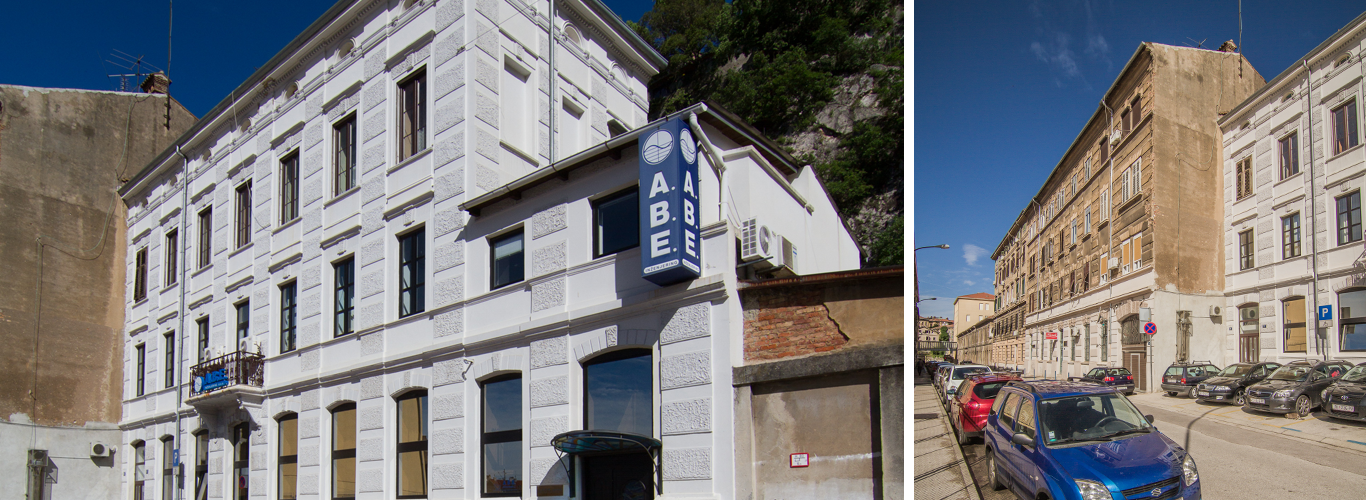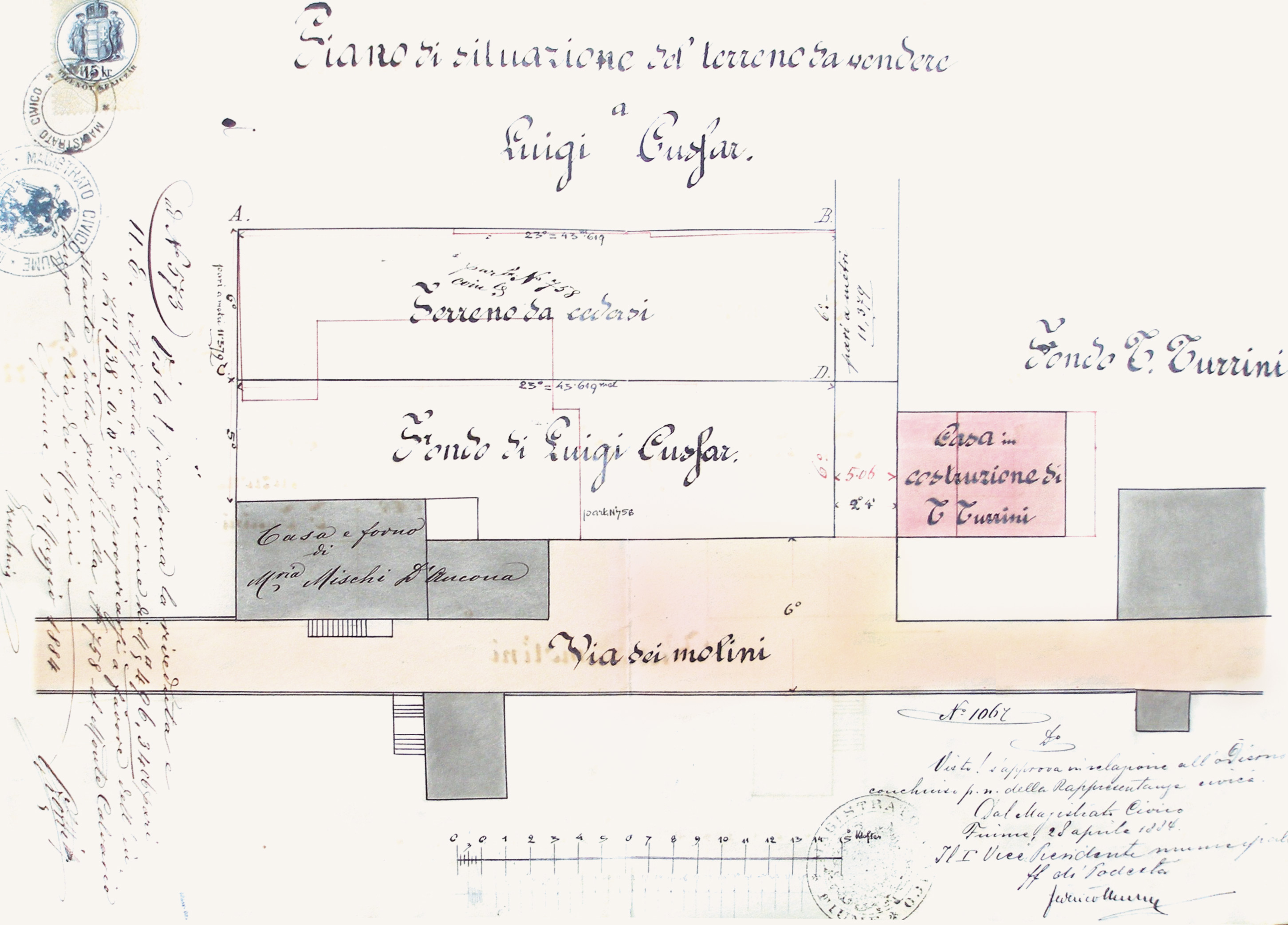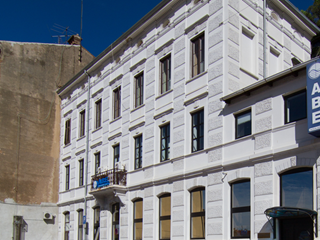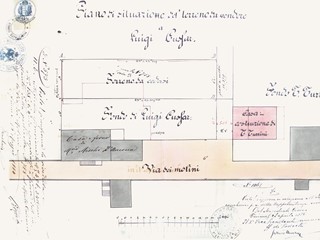Cussar Metal Foundry
address: Vodovodna Street 15 and 17Period: Historicism
Kind: Immovable material heritage
Century: 19
Year: 1886
Purpose: industrial
Today, we know about two buildings that housed the metal foundry. The older of the two buildings is located at Vodovodna Street no. 17 and dates back to 1886. The building’s design was made by Giacomo Zammattio, a reputable architect from Trieste, and it was intended for residential and business premises of the Cussar Metal Foundry. It is a very simple three-storey building with a ground floor. The façade is divided by a series of windows of simple rectangular shape with pronounced semi-circular and flat historicist lintels. The monotonous layout is interrupted by a balcony on consoles in the middle of the ground floor. A horizontal cornice, extending between the ground floor and the first floor and below the mansard, stands out from other façade decorations. The vertical component is emphasized by intersected rustic pilasters, forming a colonnade between the apertures. The building has been restored and serves for residential purposes today.
The second building is located at Vodovodna Street no. 15. It dates back to 1908 and it was designed by Giacomo Mattich. The financier of this three-story building was the owner of the metal foundry, Luigi Cussar, and it was originally intended for commercial and residential purposes. The façade facing Vodovodna Street is particularly interesting because of the playfulness of its architectural shapes. The façade is vertically divided by an intersecting rustic pilaster strip, and horizontally by cordon moulded cornices, based on the motifs of Cussar I.
It is important to emphasize that the production plant was located in the backyard of these two buildings. The current function of the building is still both commercial and residential.
Valorization:The buildings have been preserved by the conservators-restorers and are categorized as monuments second category. They are examples of historicism in Rijeka. They have been preserved in a very good condition until today and are used as residential and office spaces.
Bibliography:
Golob, Ivana, Stara industrijska zona, Sušačka revija 77., godina XX, Klub Sušačana, Rijeka, 2012.
Golob, Ivana, Industrijska arhitektura na području od Školjića do Banskih vrata i njena zaštita danas, diplomski rad, Filozofski fakultet u Rijeci, Rijeka, 2010.
Hraba, Nina; Lubina, Melita; Oštrić, Dolores; Sabalić, Damir; Turato, Lada, Vodopivec, Ivor; Zrnčić, Anamarija, Konzervatorski elaborat za područje Vodovodne ulice u Rijeci, Broj elaborata 1952, Konzervatorski odjel u Rijeci, 2009., Inventarni broj 17.
Magaš, Olga, Vodovodna ulica u kontinuitetu razvoja od zelenog kanjona do industrijske zone i novih mogućnosti, Zbornik GFR IX, Rijeka, 1992.
Magaš, Olga, Industrijska arhitektura, Arhitektura historicizma u Rijeci, MMSU, Rijeka, 2001.






